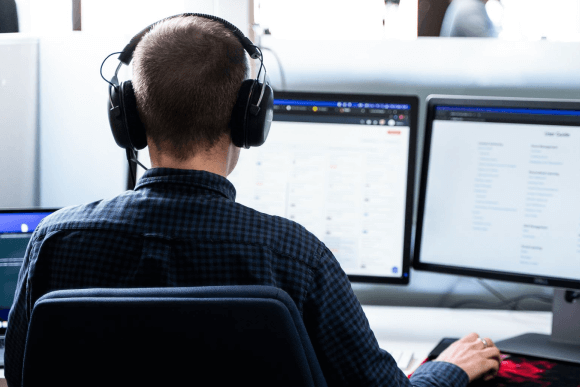Learning in the flow of work: a guide for managers
Discover practical tips, enablers, and blockers for adopting Learning in the Flow of Work in your organization.

In today’s business environment, driven by rapid technological advancements and AI disruption, continuous learning is crucial for both individual and organizational success. The emergence of AI-powered solutions like ChatGPT is changing how we work, making it essential for employees to adapt and develop new skills to stay relevant and competitive.
Integrating learning into daily work routines is essential for organizational success.
In this article, we’ll discuss the key enablers and blockers of Learning in the Flow of Work and provide practical tips for managers to implement this approach within their teams effectively.
Discover:
- What is Learning in the Flow of Work?
- Why is Learning in the Flow of Work Important?
- The benefits of applying the Learning in the Flow of Work
- A History of the LIFOW Concept
- How to Implement Learning in the Flow of Work in Your Organization?
- Enablers of the Learning in the Flow or Work
- Blockers of the Learning in the Flow or Work
What is learning in the flow of work?
Learning in the Flow of Work (LIFOW) is an approach that refers to the process of acquiring new knowledge and skills in the context of work activities. The focus of learning can vary from timely relevant learning (TLR) to intense learning activities, depending on the individual’s current tasks, role, and experience level.
By timely relevant learning, I mean a type of learning that takes place during an individual’s daily work activities. It concentrates on acquiring knowledge directly applicable to the current task, problem, project, or required field of expertise.
In simpler terms, it addresses problems or tasks they need to solve right now in the most efficient way and with minimal disturbance to workflow.
Such activities could be configuring software, debugging code, replacing printer cartridges, etc.
Intense learning involves time-consuming learning and development (L&D) activities directed towards acquiring expertise in a specific area of knowledge or skills, advancing one’s role, or boosting one’s overall proficiency.
Compared to timely relevant learning, it focuses on a bigger timeframe and goals. And in such cases, you need more advanced and time-consuming learning activities.
Some examples of intense learning could include mastering how to run successful Google Ads campaigns or advanced course on entire PPC marketing, completing courses on leadership to shift into a leadership role, or even undertaking more substantial endeavors that require months of focused efforts, such as learning to drive a truck or mastering the art of coding.
In the current flow of work, you can’t avoid big chunks of learning activities; not everything can be covered with small pieces of learning materials.
A versatile approach to learning in the flow of work
Although it’s called “Learning in the Flow of Work,” it doesn’t always have to be directly tied to an individual’s current work-related tasks. It is a versatile approach to learning that should be adapted to various situations and contexts.
I would display it the following way.
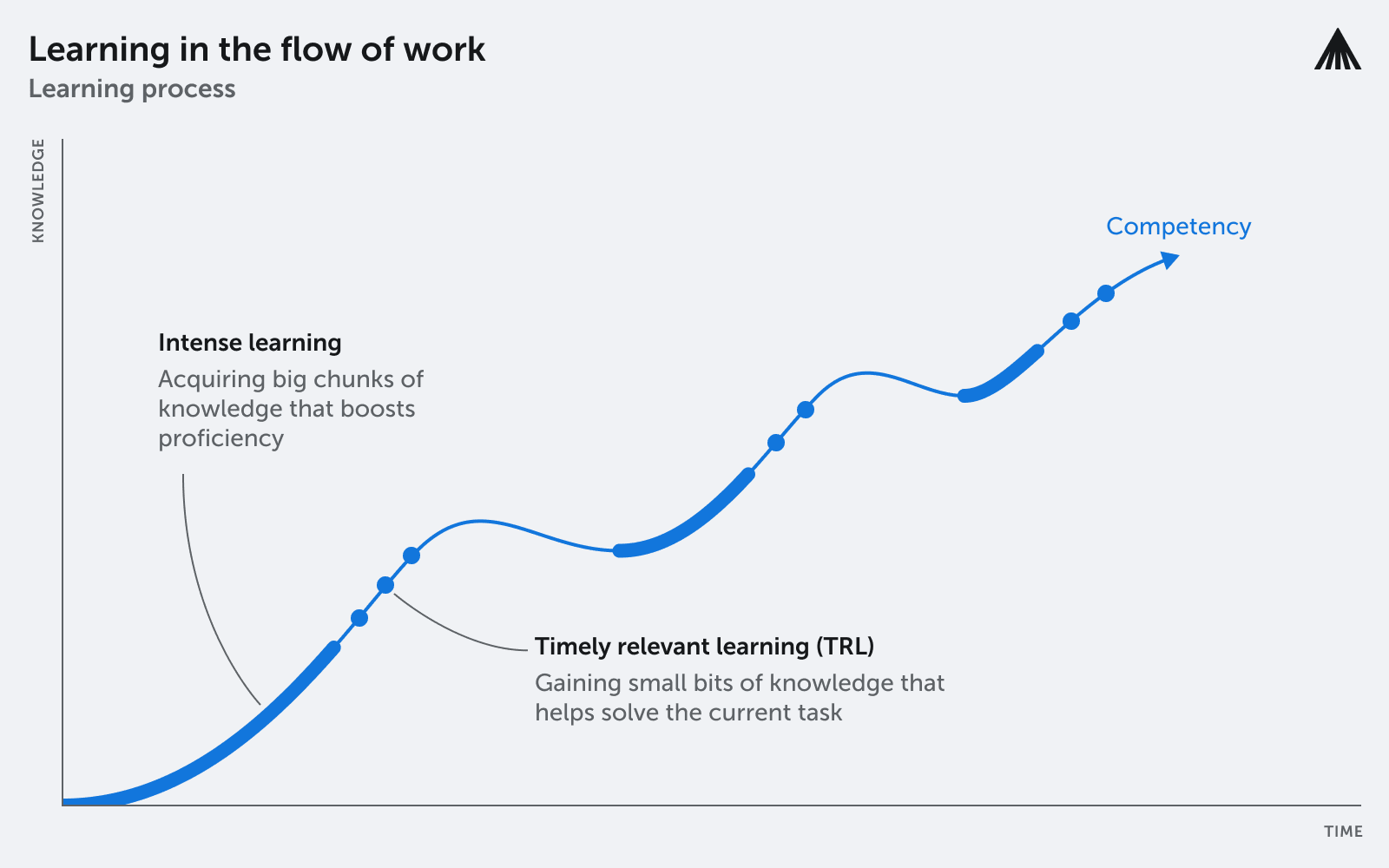
A process of employee development in Learning in the Flow of Work.
The first segment on a curve represents the first steps in the company.
Employees who join a company require initial training – either onboarding or industry-specific training – learning the company’s process, product, tools, etc.
This training should be intensive and focused on accelerating orientation and making a new employee effective as fast as possible. To do so, you would most likely need to vary employee development methods: coaching, mentoring, job shadowing, etc.
Additionally, offering timely relevant learning activities can help polish the employee’s skills and competencies relevant to their role. The new knowledge is more likely to be retained when applied when needed.
As employees progress in their careers, they might want to get new challenges and continue growing. This could happen by getting more responsibilities, promotions, specialization, or even changing job roles.
That’s where we face the second segment, which could be a career advancement or a fundamental shift in expertise (in other words upskilling or reskilling).
To support this stage, it’s necessary to provide needed training again. And once more, training activity could vary based on the requirements.
Such activities could repeat to help employees learn new skills and acquire knowledge to achieve proficiency and competence.
It’s important not to view the concept as a silver bullet solution. Instead, it should be considered a concept and a shift in approach to learning. And it is essential to recognize that you will still need to utilize all available learning and training methods and put in the effort and do the heavy lifting to achieve meaningful results.

L&D strategy framework
You will receive a list of questions along with a spreadsheet template to help you analyse your L&D strategy.
DOWNLOAD FRAMEWORKWhy is learning in the flow of work important?
Organizations must prioritize continuous learning to maintain a competitive edge in the digital transformation era and with the rise of AI technologies like ChatGPT.
According to Generative AI community, for the first five months of 2023, companies created and publicly launched around 1000 AI products and solutions.
These new AI technologies disrupt the current processes so significantly that you wouldn’t recognize the way we would work in the next 5 to 10 years dramatically.
And we must adapt to stay competitive.
Think about the second fact, according to LinkedIn’s 2018 Workforce Learning Report, 68% of employees would prefer to learn at work, and 49% prefer to learn at the point of need.
Understandably, employees face challenges balancing their work, personal lives, families, hobbies, and pursuing new knowledge. Finding time for learning and development during and after work can be daunting for many individuals.
While some highly motivated employees may devote their personal time to learning, this isn’t the case for everyone. Therefore, it becomes crucial for companies to consider and plan how they can support employee training during work hours.
This is where the concept of Learning in the Flow of Work can truly make a difference and help employees grow while maintaining a work-life balance.
For companies and learning experts, it can help better understand what type of learning is necessary, when it is needed, and how to deliver it effectively.
AI will eventually disrupt the L&D industry as well – learning recommendations created by AI, AI-tailored learning paths, AI-generated content, and more.
Mainly, the LIFOW approach encourages a mindset shift among CLOs (Chief Learning Officers), HR professionals, and learning consultants. It helps them genuinely support employee growth and development and invest time in crafting learning paths aligning with their expertise, roles, and career aspirations.
With learning in the flow of work, you can help your employees achieve their full potential and enhance their overall job satisfaction.
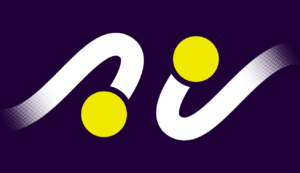
Connecting skills and learning
Valamis provides you with skills management and learning tools in the same platform, allowing you to tailor your content to existing needs.
Learn moreThe benefits of applying the learning in the flow of work
1. Increased employee productivity
Learning in the flow of work offers employees timely and relevant information, training, tutorials, and guidance. This helps them solve problems and challenges more effectively, increasing productivity.
2. Enhanced employee engagement and motivation
Personalized and meaningful learning opportunities increase employee engagement and motivation. When employees can apply what they have learned directly to real-work situations, they are more likely to stay engaged and motivated.
Read: 5 Ways to Increase Employee Engagement with L&D
3. Boosted satisfaction and improved employee retention
Learning in the flow of work empowers employees to take charge of their own learning journey, leading to increased satisfaction and retention. Employees are more likely to stay with an organization when they feel their career development is supported and aligned with their goals.
4. Strengthened alignment and communication
Learning in the flow of work aligns learning content with business objectives and strategies. This alignment improves communication and feedback among employees and managers, creating a shared understanding of expectations and outcomes.
5. Driven innovation and growth
Learning in the flow of work exposes employees to new ideas and perspectives, stimulating creativity and curiosity. This, in turn, drives innovation and growth for the organization while also improving employee skills and knowledge.
6. Cost savings
Learning in the flow of work minimizes the need for expensive formal training sessions, which can be time-consuming and disruptive. Employees can learn at their own pace, and organizations can reduce costs associated with traditional training programs.
A history of the LIFOW concept
The concept has a long history, rooted in the fundamental understanding that applying new knowledge immediately increases the likelihood of retaining it.
A key study that supports the concept is “Retrieval Practice Produces More Learning than Elaborative Studying with Concept Mapping” by Jeffrey D. Karpicke and Janell R. Blunt, conducted in 2011.
In this study, they experimented with students. They tested how different learning activities affect their abilities to make inferences and exhibit a deep understanding of what they have studied.
The main conclusion is that applying just acquired knowledge (retrieval practice) leads to the largest recall in memory compared to studying it again and mapping the concept or explaining it to another person.
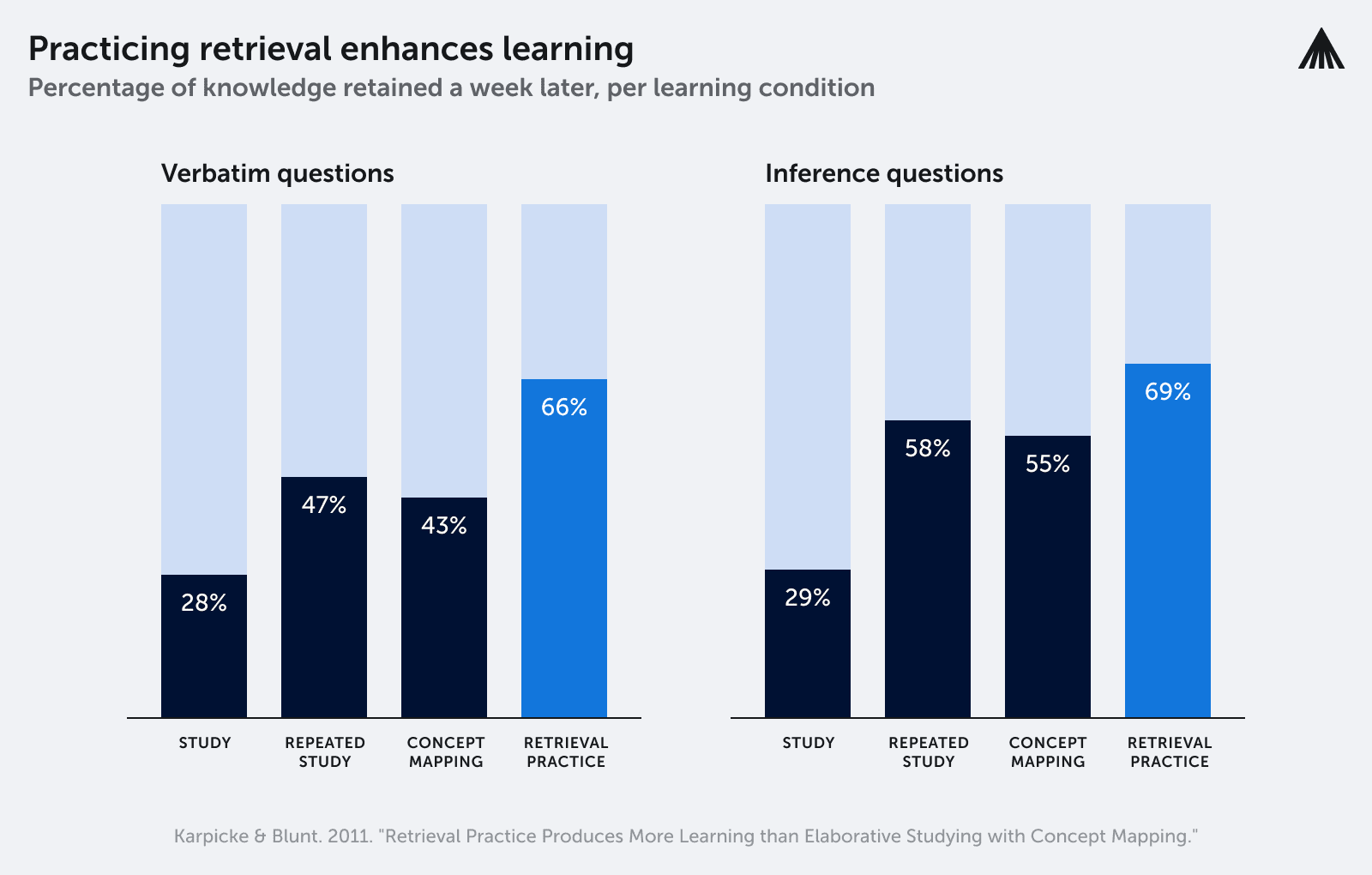
In 2013, John Seely Brown of Deloitte first mentioned the idea of learning in the flow of work. Catherine Lombardozzi, inspired by Brown, later popularized it in her article “Scaffolding Learning in the Flow of Work.” Lombardozzi further explored the concept in her research article “Challenges of Learning in the Flow of Work: Scaffolding Self-Direction.”
Finally, Josh Bersin conceptualized and introduced it in his article “A New Paradigm for Corporate Training: Learning In The Flow of Work” in 2018 and presented it at the Talent Connect conference that same year.
Learning in the Flow of Work: The Time is Now | Josh Bersin | Talent Connect 2018
How to implement learning in the flow of work in your organization?
Since Learning in the Flow of Work is a conceptual approach and its implementation can vary depending on the organization, there is no one-size-fits-all implementation process. However, to help you get started, I will identify some of the enablers and blockers that can impact the success of your implementation.
By understanding these factors, you can tailor your approach to LIFOW to fit your organization’s unique needs.
Enablers of the learning in the flow of work
1. Learning culture
A culture of learning is essential for Learning in the Flow of Work to succeed. Organizations should prioritize continuous learning and provide employees with the necessary resources, time, and support to learn and grow on the job.
Managers and leaders should also lead by example and demonstrate a commitment to learning, creating a culture where employees feel comfortable seeking out learning opportunities.
For example, allowing employees to spend 1-2 hours a week learning something relevant to their role, tasks, or career path can significantly improve their performance and satisfaction. But more importantly, you will give them time to learn because not everyone has it after work.

Build a learning culture: a practical workbook for your organization
Upgrade your organization’s learning culture with clear, actionable strategies to address the challenges.
Download workbook2. Technology
Technology is a critical enabler for Learning in the Flow of Work. Organizations must invest in the right tools and systems that seamlessly integrate learning into the work process.
This could include a learning management system (LMS), learning experience platform (LXP), competence management system (CompMS), mobile learning app, or any other tool that could provide easy access to learning resources and materials or can help address required learning.
An even better solution would be integrating your learning solution with work-related software or channels, such as Slack, MS Teams, Salesforce, etc., to tailor employees with relevant and recommended training within the environments where they spend most of their work. And if you may, I would call it tools not as dull as old LMSs.
Read: LXP vs. LMS: Which Platform to Choose in 2023?
3. Content curation
Organizations should curate and create relevant learning resources that apply to employees’ work. This could include videos, articles, simulations, and job aids that help employees acquire the skills and knowledge they need to succeed on the job.
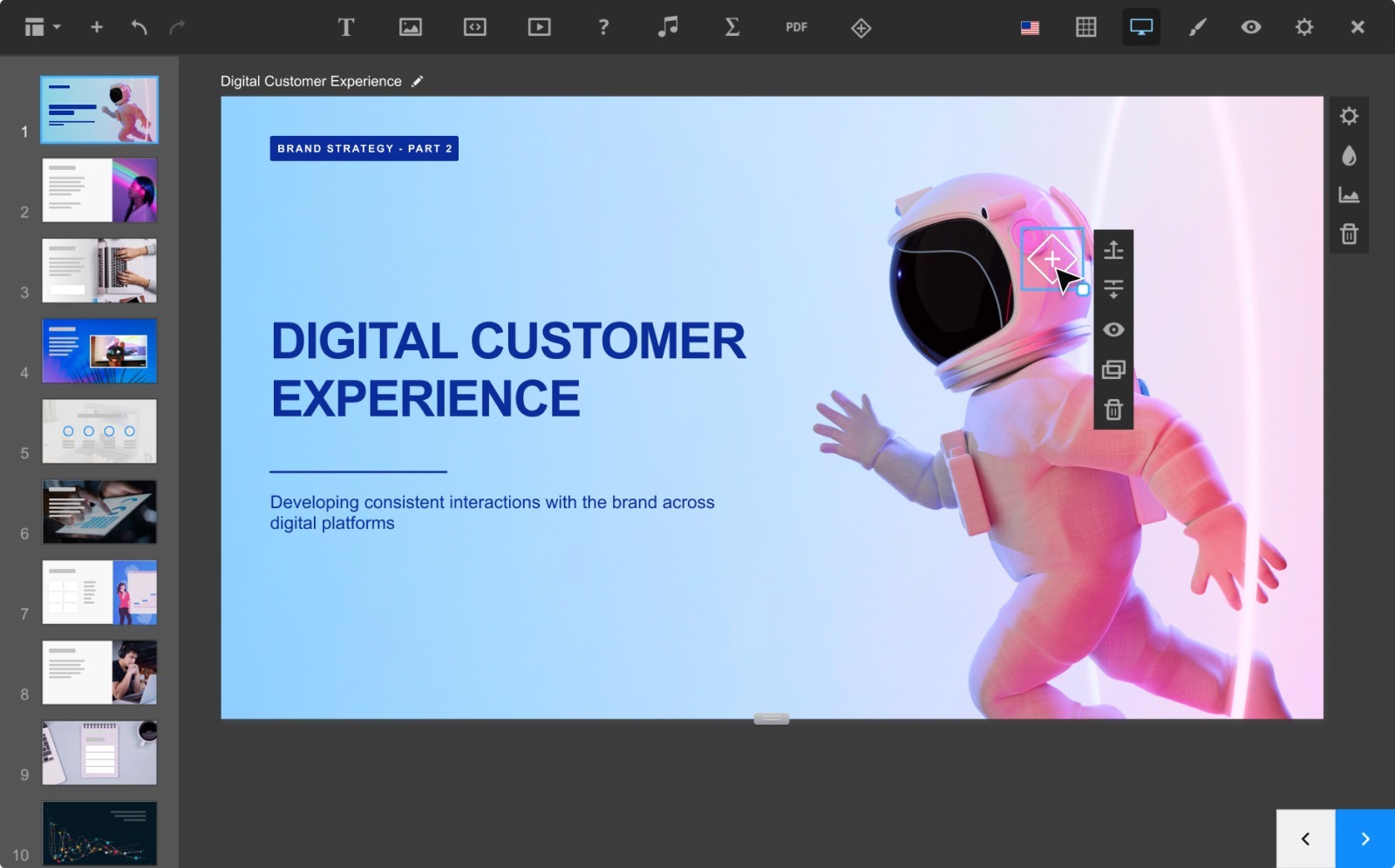
With content authoring capabilities in the Valamis Learning Platform, organizations utilize user-generated content. Each employee can easily create learning modules and share knowledge.
As mentioned earlier, developing career plans and learning paths that align with employees’ aspirations can be a powerful way to guide their professional growth. By linking these plans with skills and competency management solutions, organizations can effectively steer the trajectory of their employees’ development, facilitating upskilling and, when necessary, reskilling.
4. Foster user-generated content
User generated content is particularly important in knowledge management for non-office work types such as manufacturing, construction, retail, logistics, etc. Areas where the required skills and knowledge are often tacit and hard to transfer through traditional learning methods.
In such cases, creating learning materials that are specific to the organization and its employees is the only way to.
Encouraging employees to spend time creating video materials about crucial aspects of their work can not only save time for their colleagues but also save the company money.
5. Leadership support
Finally, leaders should demonstrate a commitment to learning and support the necessary investments in learning resources and materials. They should also communicate the importance of learning to the organization and provide employees with the necessary support and guidance to learn and grow on the job.
This also encompasses the aspect of performance support. It’s crucial to cultivate a culture of understanding that performance may initially drop as employees dedicate time to learning. However, this investment in learning will eventually pay off as they become more proficient with their tasks and gain new skills and knowledge.
6. Analytics and metrics
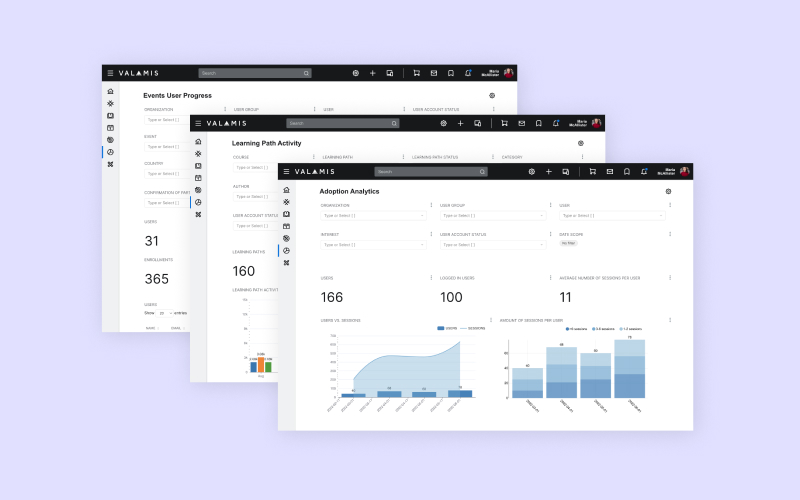
Organizations should use data to monitor employee learning progress, identify gaps, and track the impact of learning on job performance.
This data can help organizations continuously improve their learning materials and processes and ensure employees gain the necessary skills and knowledge to succeed.
By leveraging technologies like xAPI and skills management solutions, commonly called CompMS, companies can gain valuable insights into their employees’ learning progress and identify skills gap. With this information, organizations can make data-driven decisions on optimizing their training programs and ensure that their employees have the necessary skills to excel in their roles.
By prioritizing these enablers, organizations can successfully implement Learning in the Flow of Work and improve employee performance.
Read: 10 Valuable Training Metrics to Know
Blockers to learning in the flow of work
1. Resistance to change
Learning in the Flow of Work represents a significant change in the way organizations approach learning. Some employees and managers may resist this change, feeling that it disrupts their work processes or that they do not have time to learn.
Organizations must communicate the benefits of learning and the importance of continuous learning to overcome this resistance.
2. Inadequate technology
Suppose organizations do not invest in the right technology or overinvest in various unaligned and not integrative ones. It can block adoption and even lead to significant monetary losses.
For example, if the LMS is challenging to use or does not integrate well with commonly used systems, employees may not use it or use it only when they have to, like through mandatory training.
Additionally, if the learning materials are not easily accessible or difficult to navigate, employees may become frustrated and waste valuable time trying to find the necessary information.
Organizations must choose the right combination of technologies that are cost-efficient, reliable, scalable, and fit their needs and the needs of their employees.
3. Lack of relevance and wrong timing
For learning to be effective, it must be relevant to employees’ work.
If the learning materials and resources do not align with their job duties, role, or career path, or they are not up-to-date, employees may not see the value in investing their time and effort into learning.
Without proper learning materials, employees may feel discouraged and disengaged from learning, leading to a lack of motivation to learn.
For example, our developers at Valamis have expressed frustration with the outdated React courses on LinkedIn Learning. They pointed out that instructors’ concepts and best practices are no longer relevant. They are from 2016, even though the course was marked as updated in 2022. As a result, L&D and HR specialists have begun searching for alternative learning solutions with more up-to-date materials.
Timing and type of learning are also critical factors. For instance, if an employee requires a simple how-to guide, receiving a vast learning course would be frustrating. Similarly, significant training activities should not be replaced with short learning courses. Organizations should consider situations where coaches or mentors are required, and webinars or seminars should also be conducted.
Organizations need to ensure that learning activities are timely, applicable, and relevant to employees’ work to be effective.
5. Lack of time at work for learning
Employees who are busy with their day-to-day work may find it challenging to take time out to participate in learning activities. This can result in learning being deprioritized, which can lead to a lack of development and growth opportunities for employees.
Additionally, when learning is viewed as an extra task on top of an already heavy workload, employees may feel overwhelmed or stressed, which can negatively impact their ability to absorb and apply new knowledge and skills.
Organizations must find ways to incorporate learning into employees’ daily work routines, making it easily accessible and not seen as a burden.
6. Pressure from management
Pressure from management can create a work environment that prioritizes immediate results over long-term growth and development, which can negatively impact learning outcomes.
Fear of making mistakes and facing the consequences from management can discourage employees from spending time learning, taking risks, and trying new things, which are important for learning and development.
They may prioritize completing tasks assigned by management over learning activities, even if those activities are essential for their professional growth.
7. Lack of feedback and progress tracking
Without feedback, employees may not know if they are on the right track or need to adjust their learning approach. This can lead to frustration, demotivation, and a lack of engagement in the learning process.
Similarly, without progress tracking, employees may not see the results of their learning efforts. This can make it difficult for them to stay motivated and committed to their learning goals. They may also have difficulty identifying areas where they need to focus their learning efforts, which can lead to a lack of progress and a feeling of stagnation.
Final thoughts
To conclude, Learning in the Flow of Work is an approach and mindset shift to learning that can aid in making organizational learning effective. However, it is important to balance work and learning activities appropriately.
As Stephen Covey said, The key is not to prioritize what’s on your schedule but to schedule your priorities.
Incorporating learning into everyday work can create a culture of continuous learning and improvement, but it’s just one step towards a larger goal.

Build a learning culture: a practical workbook for your organization
Upgrade your organization’s learning culture with clear, actionable strategies to address the challenges.
Download workbook


